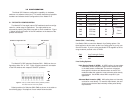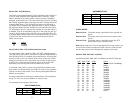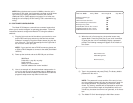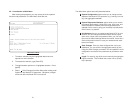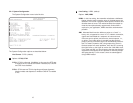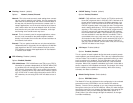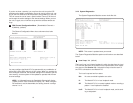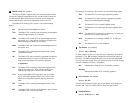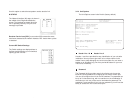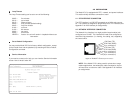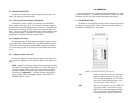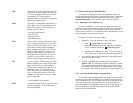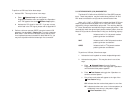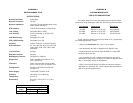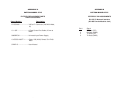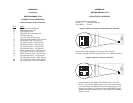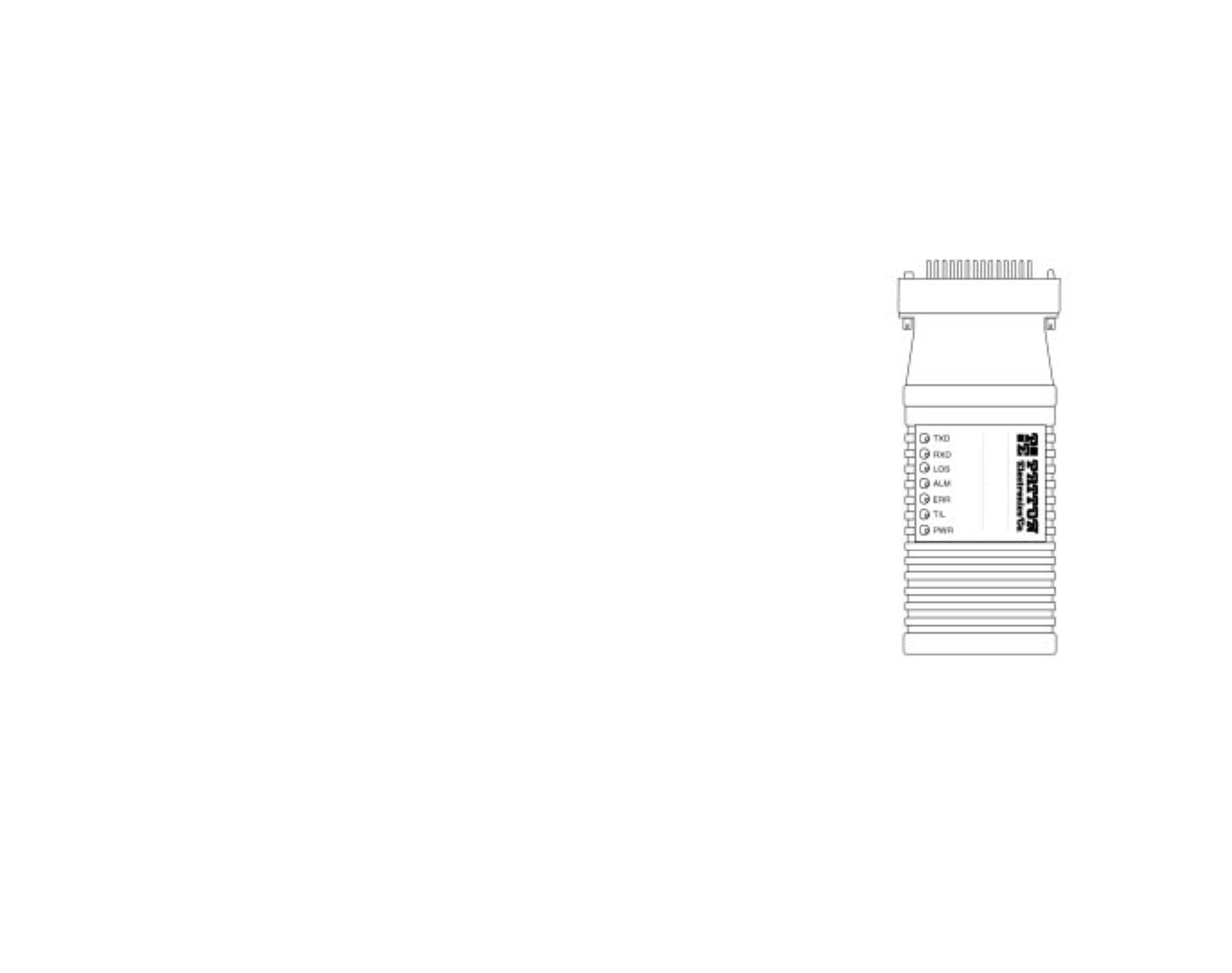
27
28
4.3 POWER CONNECTION
The Model 2715 offers three ways to supply external power: AC
power, DC power and interface power.
4.3.1 Using the AC Power Supply (100-240VAC)
The Model 2715 uses a 5VDC, 2A universal input 100-240VAC,
power supply (center pin is +5V). The universal input power supply is
equipped with a male IEC-320 power entry connector. This power sup-
ply connects to the Model 2715 by means of a barrel jack on the rear
panel. There are a variety of international power cords available for the
universal power supply. The Model 2715 powers up as soon as it is
plugged into an AC outlet–there is no power switch.
4.3.2 Supplying DC Power
You may bypass the DC wall adapter and supply DC power directly
to the NetLink E1™ power supply jack. DC power supplied must be
+5VDC ±5%, 300mA minimum, center positive, and can be supplied
via a barrel type plug with 2.1/5.5/10mm I.D./O.D./Shaft Length dimen-
sions.
4.3.3 Supplying Power via pin KK
You may also supply DC power directly to pin KK of the V.35 inter-
face. DC Power supplied to pin KK must be +5VDC ± 5%, 300mA min-
imum.
NOTE: Model 2715 is factory configured to accept power from the
enclosed DC wall adapter (See Sections 4.3.1 and 4.3.2 above). If
you wish to supply power via pin KK on the interface, you must
change the setting of the
power supply jumper
on the printed cir-
cuit board See Appendix E. All power sources must be SELV
(Circuit, Safety Extra Low Voltage) specified. (See CENELEC
EN60950, Section 1.2.8.5)
5.0 OPERATION
Once the Model 2715 is installed and configured properly it is ready
to place into operation. This section describes the function of the LED
indicators, and the use of the loopback and pattern test modes.
5.1 LED DESCRIPTIONS
The Model 2715 is equipped with seven LED indicators that monitor
the status of communication. Figure 4 (below) shows the location of
the LEDs on the Model 2715 front panel.
TXD When the unit sends a one, the TXD LED is
turned on. When it sends a zero, the TXD
LED is turned off. Moreover, the TXD LED is
active only in active DS0 channels. In inac-
tive channels, the TXD LED is off.
RXD When the unit receives a one, the RXD LED
is turned on. When it receives a zero, the
RXD LED is turned off. Moreover, the RXD
LED is active only in active DS0 channels.
In inactive channels, the RXD LED is off.
Figure 4. Top of Model 2715, Showing LED Indicators
Model2715



